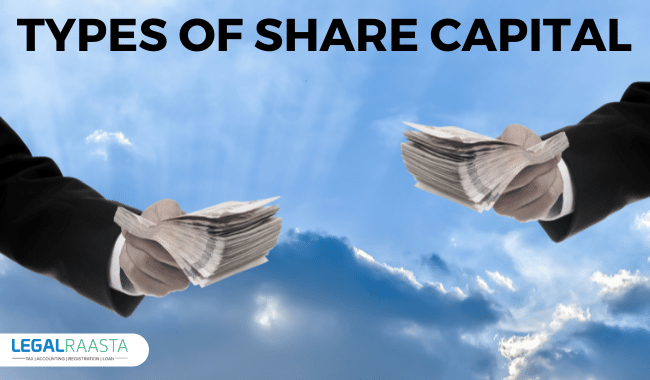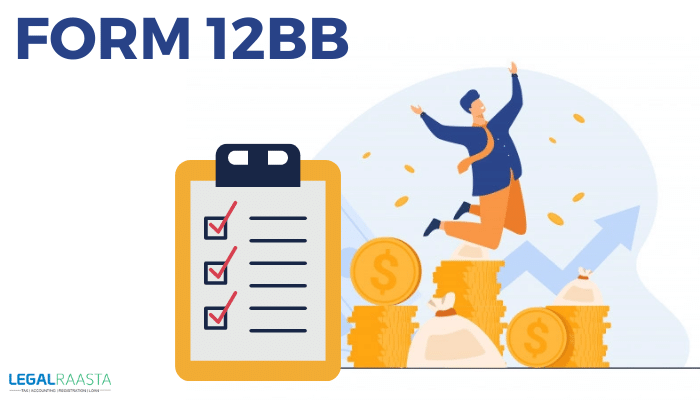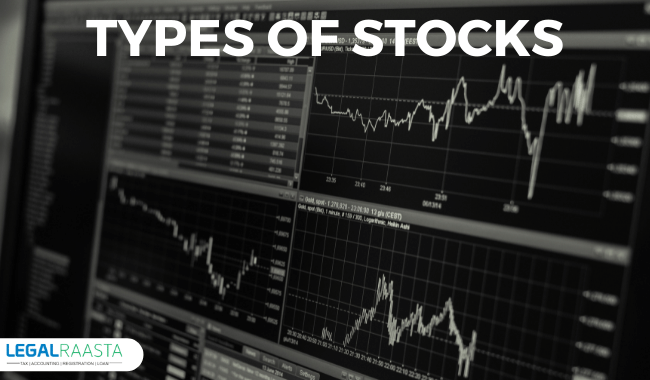Types of Share Capital
The money raised by the corporation by issuing shares to the general public is referred to as share capital. In simple terms, share capital refers to the money invested in a firm by its shareholders. It is a long-term source of capital in which stockholders receive a portion of the company's ownership. The term capital usually refers to the amount of money used to launch a firm. It has been used in various contexts in various areas of the Indian Companies Act, but in general it refers to the money subscribed pursuant to the Company's Memorandum of Association. The assets with which the business is carried on are referred to as capital. There are different types of share capital available in the market. The total nominal value of a company's shares is referred to as its share capital. The terms "capital" and "share capital" have been seen as interchangeable in the context of corporations. The capital of the company must be indicated in the company's Memorandum and Articles of Association.Types of Share Capital
Below given are the different types of share capital: 1. Authorized Share Capital The total capital that a corporation accepts from its investors by issuing shares that are listed in the firm's official documents is known as authorized share capital. Because a corporation is registered with this capital, it is also known as Registered Capital or Nominal Capital. The limit of Authorised Capital is set by the Capital Clause in the Memorandum of Association, according to Section 2(8) of the Companies Act, 2013. The firm has the authority to take the necessary actions to expand the limit of authorized capital in order to issue more shares, but it is not permitted to issue shares that exceed the limit of authorized capital in any case. Issued Share + Unissued Share = Authorized Share. 2. Issued Share Capital The portion of Authorized Share Capital that is issued to the public for subscription is known as Issued Share Capital. Issuance, allocation, or allotment are the terms used to describe the act of issuing shares. To put it another way, Issued Share Capital is the subset of Authorized Share Capital. A subscriber becomes a shareholder after the allotment of shares. 3. Unissued Share Capital Companies, as previously stated, commonly issue shares from time to time. As a result, their authorized and issued share capital will differ. The difference between the two sums will be the company's unissued share capital. This unissued capital refers to the number of shares that a firm has available to raise capital. 4. Subscribed Capital The portion of issued capital that has been sold to the public is known as subscribed capital. It is not necessary for the issued Capital to be fully subscribed by the general public. It is the portion of the issued capital for which the corporation has received an application. Let's look at an example: If a firm issues 16000 shares of one hundred rupees each and the public only applies for 12000, the issued capital is Rs 16 lakh and the subscribed capital is Rs 12 lakh. The total number of outstanding and treasury shares is equal to the number of issued shares. 5. Called-Up Capital Called-up Capital is the portion of the Subscribed Capital that comprises the shareholder's payment. The capital is not given to the company in its whole at once. It makes use of a portion of the subscribed capital when it is required in installments. Uncalled Capital refers to the remainder of the Subscribed Capital. 6. Paid-Up Capital Paid-up Capital is the portion of Called-up Capital that is paid by the shareholder. The shareholder does not have to pay the sum requested by the corporation. The shareholder may pay half of the called-up Capital, referred to as Reserved Capital, to the company. 7. Uncalled Share Capital When a company issues shares to its shareholders, it expects them to pay for them. They may, however, choose not to do so. Uncalled share capital refers to shares that have been issued but not yet been claimed. This capital also refers to the shareholders' contingent liabilities. It is the remaining amount after deducting the called-up capital from the total number of shares allotted. 8. Reserve Share Capital Reserve capital is the amount of stock that a firm can't sell unless it goes bankrupt. These shares are usually issued following a special resolution that receives more than three-quarters of the vote. Companies, likewise, cannot change their articles of incorporation to overturn this choice. Reserve share capital serves a specific purpose: to make liquidation easier. Reserve capital is subject to a number of restrictions. Companies are unable to use this money as a form of security or convert it to ordinary capital. Companies, on the other hand, can have it overturned by obtaining a special court order. Reserve share capital reflects the capital that will not be available unless the company is liquidated. 9. Fixed and circulating share capital A company's subscribed capital includes circulating share capital. Operational assets, such as bank reserves, book debts, invoices receivable, and so on, provide this capital. These funds comprise funds used for a company's fundamental operations. Fixed capital, which is made up of a company's fixed assets, is also closely related.The Balance Sheet's Representation of Share Capital
In general, the share capital can be found in the company's balance sheet under the heading ‘shareholder’s fund.' The real capital is the paid-up capital, which represents the amount paid by the shareholders. It is also added to the liabilities side of the balance sheet to complete the column.Conclusion
The amount of money raised by a company's stockholders is referred to as share capital. It represents the par value of a company's total number of outstanding shares in accounting. Companies can disclose numerous different types of share capital. Authorized, issued, subscribed, unissued, called-up, paid-up capital, and so on are examples of these terms. Companies issue shares to raise funds by diluting the original shareholders' ownership interest. The price of a stock may fluctuate from time to time. As a result, it is preferable to invest wisely in the stock market. Furthermore, many people are perplexed by the distinction between shares and shares capital. A corporation's share capital is the money raised through the sale of equity to investors, whereas a shareholder's share is the percentage of the money paid to the company.Related Posts DPT – 3 Return Capital Account | Types of Capital Accounts & it’s Importance









